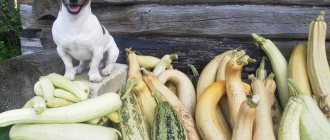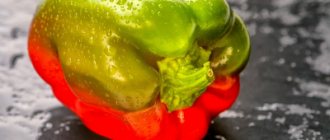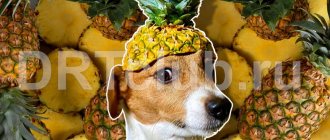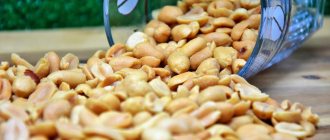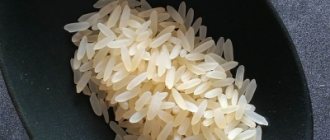Natural food for a dog is far from just meat. The owner needs to understand what vegetables are given to dogs in order to make the diet complete. Dogs, like wild canines, are not obligate predators. They come as close as possible to omnivores, having learned to benefit not only from animal, but also from plant food.
At the same time, it is a mistake to believe that all the same vegetables are safe and healthy for dogs as for people. Some fruits can seriously harm your pet, and some are fed with caution and not too often. Author of the article: Olga Shiltsova, practicing veterinarian, author of the books “Dachshund of Fate” and “Tails of Fortune”
The role of vegetables in a dog's diet
People consider fruits and vegetables to be a valuable source of vitamins. There is some truth to this: dogs, unlike cats, can get vitamin A from beta-carotene. But for dogs, vegetables are important primarily as a source of fiber, non-digestible carbohydrates.
Beneficial functions of fiber:
- Normalizes stool (prevention of not only constipation, but also diarrhea);
- Accelerates the movement of feces through the large intestine;
- Provides a feeling of fullness (the pet gets full faster, while the caloric content of the diet is reduced);
- Regulates changes in blood glucose levels, which is especially important for diabetics.
It is very important to teach your dog to eat vegetables, and not add fiber (bran) in its pure form. Coarse fiber is contraindicated for certain diseases (gastritis, enteritis, stomach ulcers), while boiled or steamed vegetables, on the contrary, are beneficial.
Vegetables are indispensable in the diet of dogs with kidney failure. Zucchini, squash and carrots are relatively low in phosphorus, while potatoes or sweet potatoes can add energy to the diet without increasing protein levels.
For older dogs with heart failure, vegetables are an excellent source of potassium.
Finally, many dogs simply love vegetables. This safe and low-calorie treat can be given separately from the main feeding. A raw carrot as a toy for a puppy whose teeth are itching, a piece of cucumber as a reward for a completed command.
Rules for preparing vegetable dishes for animals
It is important to properly prepare vegetables for your dog so that they benefit the body. Vegetable supplements to the diet are made raw, steamed, baked and stewed. Choose a preparation option, taking into account the properties of the product.
You can alternate processing methods. For elderly pets, food crushed in a blender or grated is suitable. When stewed, vegetables are easier to digest.
Recommendations from veterinarian nutritionists:
- Dogs may swallow celery stalks whole because they are too tough to chew. This will cause intestinal blockage. It must be crushed before serving.
- Do not give vegetables to small breed dogs or puppies raw. They cannot chew them thoroughly, and their weak stomach cannot digest them.
- It is advisable to steam fruits rich in beta-carotene. Thus, this valuable element is better absorbed.
- It is useful to use flaxseed oil to prepare vegetable salad.
- Canned vegetables must not be fed to animals.
- Raw fruits in combination with dairy products will lead to unpleasant consequences.
- It is recommended to dilute meat dishes with root vegetables.
- Heat treatment should be carried out for about 20 minutes. No salt is added.
- Eggplants should not be given more than once every seven days.
- Red vegetables can not only ruin your pet’s snow-white coat, but also cause an allergic reaction.
Video: healthy vegetable casserole recipe for dogs
How many vegetables to give your dog and in what form
Any “allowed” vegetables can be given either raw or boiled. If the dog is not accustomed to vegetables and does not like to chew large pieces, then at first the vegetable part of the diet is ground in a blender (puree) or tinder on a grater.
Ideally, the amount of vegetables in the diet is calculated based on the fiber needs of a particular animal. On average, vegetables are given to dogs based on the amount of 10-20% of the diet.
Vegetable complementary feeding should start with zucchini or pumpkin. Vegetables are introduced one type at a time to observe the dog’s reaction. In case of individual intolerance (vomiting, diarrhea, gas formation in the intestines), the product is permanently excluded from the diet.
Pumpkin is suitable for first feeding
If your pet does not eat vegetables with any sauce, then fiber is introduced into the diet in the form of food additives. This can be soaked bran, seaweed, or pharmaceutical additives such as Eubicor.
Separately about greenery
In general, a dog's digestive system is not designed to digest leafy green vegetables. But, for example, mint can be given for fresh breath, basil has an antimicrobial effect, spinach reduces the risk of cancer, and some other leafy vegetables are antioxidants. Greens have very low nutritional value, so the benefits from them, compared to other vegetables, are negligible, or even none at all. And the pets themselves do not have any particular addiction to greens, especially fragrant ones.
For general development, it should be noted that relatively safe for dogs in small quantities (no more than 1 teaspoon per day) are basil, mint, lemon balm, spinach, lettuce, sorrel, parsley, dill, oregano, rosemary. Parsley should not be given to dogs with kidney problems or pregnant bitches; basil can cause an allergic reaction; lettuce can cause diarrhea.
Similar articles:
- Dry dog food Wolfsblut
- Can a dog have pasta?
- Food for white dogs
- Why doesn't my dog eat dry food?
- Dog food Now
- Probiotics for dogs
Vegetables to give dogs with caution
There are a number of vegetables that some dogs will eat without any problems. But I wouldn’t recommend giving them to your pet without caution.
Beet
I remember panicking as a child when I saw a dog peeing bright pink urine. That's when I learned that eating beets can cause bituria, coloration of urine. My dachshund was simply given boiled beets to eat. Needless to say, the color of feces from this vegetable also changes in an eerie direction.
So why do I avoid feeding beets to dogs. This is a wonderful vegetable, people perceive it as a mild folk remedy for constipation. But beets also have disadvantages:
- May cause allergies;
- Contains levels of nitrates and nitrites that are safe for humans, but significant for dogs;
- Causes bloating, colic and diarrhea in some dogs;
- Beetroot has a high glycemic index and causes spikes in blood sugar levels;
- Contraindicated during pregnancy.
There are too many other, safer sources of plant fiber, so you can safely avoid beets in your dog's diet.
Tomatoes
Tomatoes are often promoted as a natural toothbrush. A paste of these fruits applied to a dog’s teeth helps soften plaque. If your dog loves fresh tomatoes, then a small amount will not do any harm. However, I do not recommend feeding them to your pet on purpose for a number of reasons:
- Risk of allergic reaction;
- Irritates the stomach, should not be given to pets with chronic gastritis;
- Tomatoes cause flatulence and diarrhea in some dogs;
- Tomatoes belong to the “toxic” nightshade family. They contain alkaloids such as alpha-tomatine (a type of solanine) and atropine, which affect cardiac function.
Do not let your dog eat green tomatoes; unripe fruits have a much higher concentration of toxins. Older dogs or animals with cardiac problems should not be given tomatoes in any form.
Focus on yourself: a ripe tomato from your own greenhouse will not harm your pet. And store-bought fruit, stuffed with chemicals and tasteless, is at least useless. Tomatoes can be a seasonal addition to the diet, but nothing more.
bell pepper
Sweet peppers contain the hot alkaloid capsaicin. There is not too much of it in bell pepper, but it can still irritate the stomach lining, especially in dogs with sensitive digestion.
The seeds must be removed from the pepper, and the vegetable itself is best served baked. And again, if there is a choice between zucchini and peppers, it is better to give harmless zucchini.
Broccoli
Did you know that dark green vegetables (for example, broccoli) contain more carotene than orange ones - pumpkin, carrots? Broccoli is a champion not only in terms of provitamin A content, it contains many B vitamins and potassium. And despite all its beneficial properties, the vegetable is on the “stop list” of many dog lovers.
Broccoli contains isocyanates. These substances can cause poisoning in dogs. But for any symptoms to appear, the pet must eat broccoli in incredibly large quantities. The second point: isocyanates interfere with the absorption of iodine from food. Therefore, broccoli is not given to dogs with hypothyroidism.
Broccoli is good for people, but not a “superfood” for dogs
If the dog digests broccoli normally, you can give this vegetable raw or boiled, not exceeding the norm of 5-10% of the diet.
Cucumber
The cucumber itself is not at all dangerous. Raw cucumbers can be given to your dog, along with the peel, as a treat. The disadvantage of cucumbers is that they are watery: the vegetable contains too little fiber. If your dog eats a lot of cucumbers, it will cause diarrhea.
Cucumber cannot serve as a source of fiber in the diet, so it is rather useless. You should not offer your dog pickled or pickled cucumbers; Read about salt poisoning HERE
Potato
Potatoes and sweet yams are common ingredients in commercial dog foods. Potatoes are especially often used for an elimination diet for allergies. Before giving this product to your pet, you need to decide for what purpose you are doing this. Potatoes are a starchy and highly nutritious root vegetable.
Including it in the diet may be beneficial for dogs with kidney failure to increase the calorie intake while reducing the amount of protein. But dogs should no longer be given potatoes after sterilization, so as not to increase the risk of developing obesity.
Potatoes are often fed boiled. If your dog likes raw potatoes, remove the skin in a thick layer to prevent solanine poisoning.
Potatoes are not a harmful product, but they cannot be the only source of fiber. Raw tubers contain about 17% carbohydrates, and 15% of them are starch. Dogs can digest it, but you definitely shouldn’t overuse potatoes.
What about fruit?
Garden fruits are no less useful for dogs than vegetables. Almost all pets like sweet and tasty fruits. As a result, pieces of apples or bananas can be used as a reward or treat.
Just like vegetables, fruits contain a large amount of vitamins and microelements. Many of them are a source of life-giving moisture. That is why it is recommended to give the fruits to your pet, especially on hot days.
Of course, if the dog’s diet consists of industrial food, all the necessary vitamins and microelements are included in the prepared food. However, as a pleasant treat, from time to time you can give a piece of apple even to “artificial” pets. Thanks to the large amount of fiber, the fruits are an excellent way to help an animal cope with constipation.
However, not all fruits are well tolerated by animals. Like vegetables, some fruits are allergens. Therefore, the owner needs to know exactly what can be given to his pet and what it is better to refrain from.
Strictly do not give dogs onions and garlic
I try to explain to all owners that onions and garlic are dangerous for dogs. These tangy-tasting fruits contain disulfide, a sulfur compound that causes red blood cell destruction in dogs. If your pet systematically eats garlic or onions, it can cause severe anemia.
If a dog eats a lot of onions, in addition to anemia, he will receive acute poisoning. Allicin, contained in onions and garlic, reduces blood pressure and causes muscle weakness.
Poisoning and anemia may not appear immediately after eating onions, but over time, since disulfides, allicin and allisatin can accumulate in the body.
Finally, onions and garlic contain a lot of essential oils; they are caustic foods that cause irritation to the lining of the stomach and intestines.
In the literature of the 20th century, there are instructions to give dogs a clove of garlic from time to time to prevent helminthic infestation. As a veterinarian, I try to debunk the myth that garlic can rid your pet of parasites (a note about this HERE).
Most often, onion poisoning is associated with eating human food. The dog may reach the barbecue bucket, attracted by the smell of meat, and eat the pickled onions. Owners sometimes give their pets baby food (which often contains onions), leftover soup or a cutlet. Please protect your dogs from such “goodies”.
Citrus fruits: benefit or harm?
So, what vegetables and fruits can you give dogs? And how do citrus fruits affect the animal’s body? The sharp, specific smell of New Year's fruits is unpleasant for many dogs. But there are also exceptions.
Nevertheless, the same tangerines are rich in vitamins A, B1, B2, B6, C, E, PP. In addition, they contain calcium, potassium, phosphorus, magnesium, and sodium. Citrus fruits also contain easily digestible proteins, carbohydrates and fats.
All these substances are very useful for your pet. However, citrus fruits are strong allergens. Dogs, like people, have personal intolerance to the product. A negative reaction to eating fruit can be hormonal imbalance, problems with the thyroid gland and pancreas. In addition, fruits can have a toxic effect on the body.
However, if your pet loves tangerines or oranges, you can pamper him with one or two slices of his favorite fruit from time to time without fear of serious consequences.
Caution: urolithiasis
Owners of dogs with oxalate and urate type urolithiasis should be more careful than others when it comes to choosing vegetables. Dogs with urolithiasis should not be given vegetables high in oxalates and oxalic acid, since these substances are excreted in the urine and can form stones.
Stop list for oxalate urolithiasis: beets, carrots, green beans and other legumes, zucchini, broccoli
Possible: pumpkin
Choosing eggplant
Scientific research has shown that not all eggplants are created equal. eggplant that is small and firm to the touch is suitable for consumption . If we are talking about eating blue eggplants, then it is better to choose the smallest ones among them. Young eggplants do not contain solanine. Unlike blue, white eggplants are a unique product and completely harmless.
Eggplants with dark flesh or a bitter aftertaste should absolutely not be given to your dog. Due to the high content of poisonous solanine in such eggplant, it will do more harm than good.
Beet
This root vegetable contains magnesium, iron, potassium, vitamins A, B and ascorbic acid. It has a positive effect on the heart and liver. Beets stimulate the intestines, providing a mild laxative effect.
It is best to give it to your dog boiled, as it is better absorbed this way. You can also add it to porridge by grating it. Just do not overdo it with the quantity, otherwise you will cause diarrhea or allergies in the animal. In addition, beets promote color change in breeds with light coats.
